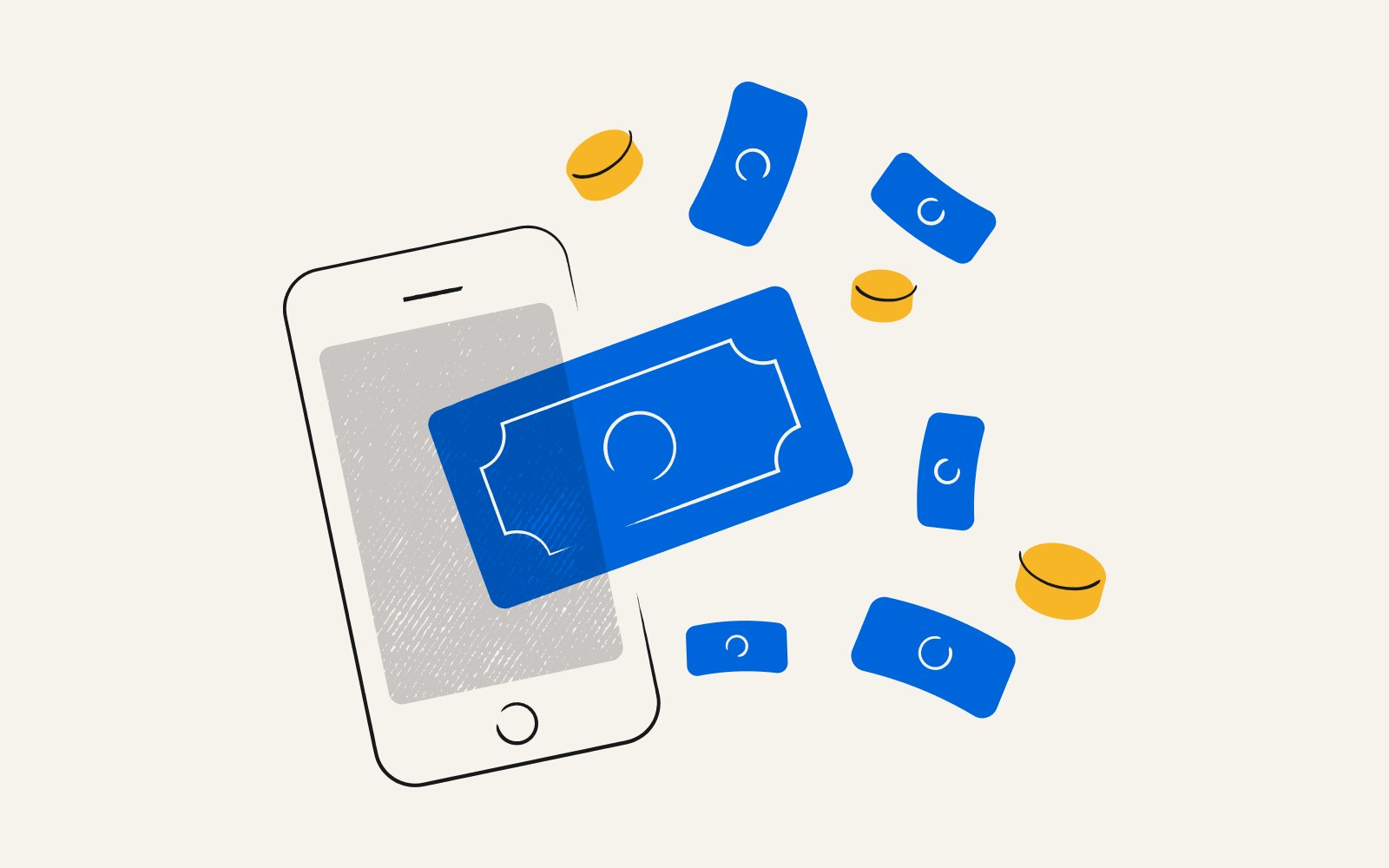Using electronic rebates in marketing campaigns
By Zach Links●6 min. read●Apr 18, 2025

Rebates have long been a go-to strategy for marketers who want to drive sales without compromising their brand’s value — but rebate delivery has gotten much easier. What used to be a clunky, paper-heavy process has evolved into a sleek, digital experience that benefits both brands and consumers.
In this article, you’ll see how rebate programs have evolved, explore the different types of digital rebates in play today, and learn how to design a rebate program that encourages sales and keeps your customers happy.
Rebates over time
Mail-in rebates gained popularity in the 1980s and 1990s as companies aimed to drive immediate sales and collect valuable consumer data. These rebates took a lot of time to cash in — customers had to complete forms, mail receipts, and wait weeks for processing.
The lengthy paperwork process meant that many people meant to submit their rebates but never did. And the companies certainly didn’t mind, considering that every time a customer forgot to redeem a $100 rebate, the company would get to keep an extra $100 in revenue.
The evolution of digital rebates
So, what is a digital rebate, and how did it enter the scene? Just like mail-in rebates, digital rebates offer a discount to customers after they make a purchase. Buyers pay the full price upfront and then follow a set process to reclaim part of the purchase price.
The rise of e-commerce in the 2000s brought rebate programs online and made them a lot easier to redeem. Modern digital rebate programs can verify purchases in real time and deliver rewards instantly via email, mobile apps, and digital wallets.
This evolution gives marketers all the strategic advantages of traditional rebates while offering a frictionless experience for customers at the same time. At this point, almost all rebates are digital and mail-in rebates have gone the way of the Moon Shoes.
Basic elements of a digital rebates program
A successful rebate program relies on some essential components that work together to deliver a smooth customer experience while still achieving your strategic marketing goals.
Clear offer structure
Your rebate program marketing should spell out a compelling and well-defined offer. Specify which products are eligible, clearly state the rebate value, and clarify the timeframe for purchase and redemption.
Remember that simplicity is key — customers should immediately understand what they need to do and what they’ll receive in return.
Seamless redemption process
Your customers don’t want to feel like they’re back in the mail-in rebate years — streamlined redemption flows encourage participation in your program.
Effective redemption processes have a few elements in common:
Digital receipt submission
Easy purchase verification
Instant reward delivery through email, mobile apps, and digital wallets
Various redemption options
Ideally, customers have a range of choices for how to redeem their rebates. Redemptions can be in the form of digital gift cards, prepaid cards, direct deposit, or monetary transfers through platforms like Venmo.
Regardless of which option they choose, reducing friction during the redemption process can improve your customers’ overall experience with your brand.
Real-time validation and tracking
Modern rebate programs enable automatic purchase verification, which cuts down on your manual review time. Plus, features like real-time tracking give you visibility into vital performance metrics, and can also help with fraud prevention.
5 common types of digital rebates
These are some of the most common types of electronic rebates:
1. Sign-up rebates
Digital sign-up rebates reward first-time customers for creating accounts and encourage existing customers to make more purchases. For example, an energy provider offers a $50 rebate when customers enroll in autopay, which drives digital adoption while reducing operational costs.
2. Cashback programs
Cashback programs are a powerful digital rebate strategy, especially for engaging younger audiences. Most Gen Z and millennial consumers say they spend more when they get cashback rewards.
For example, a luxury cosmetics brand offers 10% cashback on a new skincare line to encourage trial while preserving the product's premium positioning.
3. Multi-product rebates
Multi-product rebates incentivize customers to purchase across product lines. CPG companies often employ this strategy to encourage pantry loading and cross-category sampling. For example, a food manufacturer offers a $15 electronic rebate when customers purchase products from three different categories, which drives basket size while collecting valuable cross-category purchase data.
4. Loyalty rebates
Rebates integrated into a loyalty program combine immediate incentives with long-term engagement strategies. Loyalty programs can offer higher rebate values for members or convert a portion of the rebate into a loyalty currency, such as points. This combination helps retailers balance short-term sales goals with customer retention.
5. Behavior-based rebates
Behavior-based rebates reward customers for completing specific actions beyond the initial purchase. These actions might include writing product reviews, completing surveys, or attending educational webinars.
Companies can also tie rebates to consultations with offers like this: “Set up a meeting with the sales team and get 10% off your first month.”
4 benefits of electronic rebates for marketing strategies
Electronic rebates offer some of the same benefits as traditional mail-in rebates, but they also provide a slew of new opportunities:
1. Utility arbitrage
Research shows that rebates create a unique opportunity for utility arbitrage, which describes when consumers decide to redeem based on the value of the reward versus the effort involved or based on their own monetary need.
2. Consumer behavior insights
Electronic rebates also generate valuable first-party data about customer behavior. Each redemption provides information about the customer’s product preferences, purchase timing, and demographics. Marketers can use these insights to refine targeting, optimize product assortments, and inform future promotional strategies.
3. Brand value preservation
Traditional sales and coupons sometimes condition customers to delay purchases until promotions appear, which can damage your brand’s perceived value. Rebates preserve the perception of the regular price since the incentive comes after the purchase, so your brand maintains its positioning while still providing a financial incentive to buy.
4. Customer loyalty
Research shows that rebates drive customer loyalty when incorporated into broader engagement programs. One study found that rebates significantly increase repeat purchase behavior and customer satisfaction as long as the redemption process is simple.
In fact, most companies should avoid using the term "rebate" in consumer-facing communications because it evokes outdated mail-in processes. Generally, it’s better to emphasize the benefit by positioning rebates as "cash back" or "rewards" programs.
Where rebates fit into your marketing strategy
As part of your marketing strategy, rebates can support a variety of initiatives and serve as stopgaps in key areas:
New product launches: Rebates can support sales during a new product launch without establishing a discounted price point. This approach works particularly well for premium products where you need to maintain price integrity for long-term positioning.
Seasonal slowdowns: Electronic rebates can smooth demand curves and drive volume during annual slow periods.
Cross-selling efforts: Rebate programs that reward purchases across product categories can create cross-selling opportunities. This strategy increases immediate basket size while introducing customers to complementary products they might repurchase at full price.
How to measure the success of your rebate program
There are a few ways you can track the success of your rebate program:
Establish clear baseline metrics to accurately measure the impact of your electronic rebates program. You can also compare rebate period performance against similar timeframes without rebates, which helps account for variables like seasonality. This provides a more accurate assessment than simple pre/post comparisons.
Track both redemption rates and incremental sales volume to determine program efficiency. Significantly lower redemption may indicate communication problems, while higher rates might require adjustment to maintain profitability and perceived value.
Monitor customer lifetime value (CLV) changes in rebate redeemers versus non-participants. Effective rebate programs should drive immediate purchases and strengthen long-term customer relationships. Compare purchase frequency, average order value, and category exploration between these groups to assess the program's strategic impact beyond the promotional period.
Key takeaways
Electronic rebates provide marketers with a versatile tool for driving sales while preserving price integrity. Unlike traditional discounts, digital rebate programs create a psychological separation between the purchase decision and the reward, which maintains perceived value while still influencing buying behavior. This approach is particularly valuable for premium brands and new product launches.
To get the most out of a rebate program, focus on clarity, ease of use, and strategic alignment. When executed thoughtfully, digital rebates don’t just generate short-term wins — they help build long-term customer loyalty.
FAQs
Updated April 18, 2025


